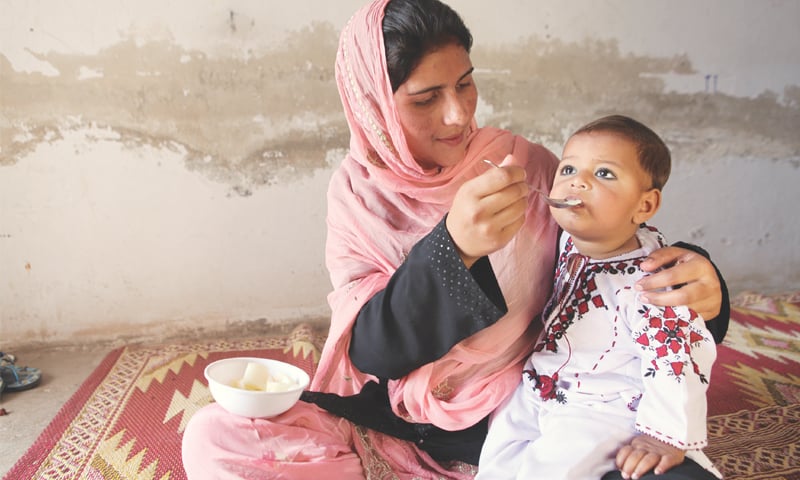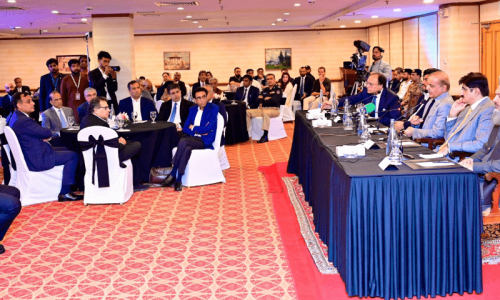Globally, nearly half of all deaths (some 2.7 million) annually among children under the age of five are attributable to under-nutrition. Associated with increased risk of morbidity and infections, malnutrition also leads to impaired growth and developmental outcomes. To add, around 159m children under five are stunted with heights much less than normal for that age, and with nearly 240m children at risk of developmental impairment.
Malnutrition is not only confined to children but is also rampant among women of reproductive age suffering from anemia, usually related to iron deficiency as well as wasting among poorer communities that are food insecure. Maternal malnutrition not only leads to increased risk of mortality among women but also contributes to fetal growth restriction (small size of the baby during pregnancy) that, in turn, multiplies the risk of growth faltering and stunting in childhood. The latter can cause long-term detrimental cognitive, motor and health impairments.
In Pakistan, malnutrition is widespread among all ages, and progress to address social determinants over the last several decades had been very slow. According to the National Nutrition Survey 2011, one-third of all children are underweight, nearly 44pc are stunted, 15pc are wasted, half of them are anemic and almost one-third of these children have iron deficiency anemia. These rates have hardly changed over two decades according to the findings of a maternal and child nutrition study group published by Lancet in 2013. Notable differences can be found between the nutritional indicators of urban and rural populations; children among the rural and urban poor are at greatest risk. Among women, 14pc in the reproductive age bracket are thin or wasted (with a body mass index less than 18.5 kg/m2) and this prevalence is highest among households that are food insecure. These differences in maternal and child malnutrition are also remarkable among various provinces and sub-regions, and clustered in areas widely recognised as high-risk districts.
With nearly 44pc of children stunted, if the government fails to reverse the situation, Pakistan is on a dangerous downward trajectory
Risk factors for childhood malnutrition in Pakistan
The most pervasive and dominant factor underlying maternal and child under-nutrition is widespread poverty and food insecurity. Despite a largely agrarian economy, many rural and urban families live below the poverty line. Periodic or seasonal food insecurity is reported by almost 40-50pc of families in certain provinces, especially in Balochistan, Sindh, South Punjab and parts of Khyber Pakhtunkhwa and Fata. These are also compounded by poor and unhygienic living conditions, little access to safe water and adequate sanitation that exposes children to high rates of intestinal infections and diarrhoea. Recent data from a Unicef progress report (2013-2015) on improving access to sanitation in Pakistan suggests that about 58m people (36pc) either defecate in the open or have access to shared toilets. In rural areas, 45pc of the population still practice open defecation.
To improve child nutrition and reduce stunting, it is imperative to focus on other parallel factors including improving maternal nutrition and antenatal care; especially the nutrition of adolescent girls and young mothers. Low literacy rates especially among women, their lack of empowerment and involvement in decision-making, early marriages, high fertility rates with a lack of birth spacing, and poor access to healthcare facilities are all important determinants of child and maternal malnutrition. Low levels of education, especially awareness of maternal care are also important drivers of under-nutrition largely through improper feeding or dietary practices.
Additionally, a major contributor to childhood malnutrition is the overall poor state of infant and young child feeding. Pakistan is conspicuous for having the lowest rates for the early initiation of breastfeeding, exclusive breastfeeding rates and timely initiation of complementary feeding, and the highest rate in the region for bottle-feeding. Despite the established benefits of early and exclusive breastfeeding, even among the poorest families, work pressure, lack of breastfeeding support and ignorance leads to the administration of alternative fluids such as tea and even animal milk. Data from the Pakistan Demographic and Health Survey (2012-2013) suggests that immediate breastfeeding is initiated in 18pc of all births, whereas exclusive breastfeeding is carried out for only 38pc of infants younger than six months. The promotion and marketing of infant formulas is a recognised barrier for exclusive breastfeeding. Although legislation exists for prohibiting such practices in Pakistan, many hospitals and physicians still breach the code for exclusive breastfeeding. In other instances, inappropriate introduction of formula milk can contribute to excess burden of intestinal infections and malnutrition. Importantly, the national regulatory and support system does not provide paid maternity leave or breastfeeding support mechanisms for working women to continue exclusive breastfeeding, a factor that has been shown in other countries to be a major barrier to appropriate feeding practices.
After the first six months of a child’s life, appropriate complementary feeding of nutritious and safe foods is a cornerstone of adequate childhood nutrition. However, the general lack of awareness of optimal feeding practices and other social taboos and misconceptions (such as the concept of ‘hot and cold foods’ or inappropriateness of some foods for children, such as meats and fruits) further affects practices. To this must be added measures to prevent common childhood illnesses, such as diarrhoea and acute respiratory infections and improving access to timely and quality care.
What must be done?
A starting point would be recognition that despite better economic conditions and an agrarian population, Pakistan’s nutrition indicators and rates of maternal and childhood nutrition progress have fallen way behind others in the region. This is related to lack of focus on implementing quality programs and addressing disparities. Bringing health and nutrition services closer to women and children and addressing social determinants, such as poverty and lack of women’s empowerment would make the difference. Existing poverty alleviation programmes such as social safety nets like Baitul Maal, Zakat programmes or the Benazir Income Support programs have huge potential for reaching those caught in the spiral of food poverty.
Fortunately, Pakistan has an extensive existing lady health workers programme, that, with improvements, can pave the way to reduce these inequalities. An enhanced focus on promoting exclusive breastfeeding and appropriate complementary feeding through mass media campaigns and existing programs should be prioritised. An effective culturally relevant behavioural change communication strategy must be implemented and sustained. Religious leaders, school teachers and social mobilisers can play an important role in promoting exclusive breastfeeding and appropriate complementary feeding. Healthcare providers must be trained in practices that promote nutrition adequacy for mothers and children, including those that advocate healthy lifestyles, nutrition and physical activity.
Regular monitoring and accountability is critical if Pakistan is to break the logjam for addressing malnutrition. There is a need to ensure regular data on nutrition indicators with more discrete regional or district level information. The situation is ripe for change with greater current emphasis on nutrition and formulation of various national and provincial nutrition focused strategies. Also, there is need for integrating various different sectors and programs to achieve the desired results effectively and efficiently as many of the determinants and influencing factors are outside the health sector. Policymakers need to recognise the importance of improved child health and nutrition for national development — also a key contributor to achieving Pakistan’s sustainable development goals.
(The writer is the founding director of the Centre of Excellence in Women and Child Health at the Aga Khan University, Karachi. He can be reached at zulfiqar.bhutta@aku.edu)
Published in Dawn, December 2nd, 2016














































